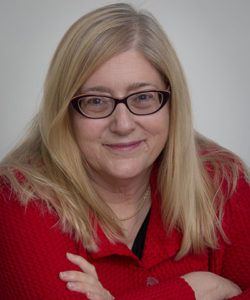Proscriptions based on gender are illusory
— that’s what I learned from women bronc riders
This spring, my historical novel, Sunny Gale, was published by Pronghorn Press. Sunny Gale is a fictionalization of the era of women’s professional rodeo from roughly 1895 to the early 1930’s. My own journey to this era and back expanded my notion of womanhood way beyond what I would have imagined possible as I turn sixty-nine.
I grew up on a ranch on the Little Laramie River, some thirty miles west of Laramie, Wyoming. Growing up as I did, we encountered few people other than immediate family. I can remember the excitement I would feel on a family trip to “town” when we rose up out of the valley to the plains and saw the lights of Laramie beckoning ahead.
My father’s parents lived in a stone mansion and, if we were going to town, it was to spend time with them. The mansion was huge, a great place to explore, to hide and play in. If we spent the night, I slept in the “girls’ room” where my aunts used to sleep. On the walls hung two large portraits of my aunts when they were Laramie Jubilee Days’ Queens. Laramie Jubilee Days was our rodeo week. I grew up in the heartland of rodeos and there were always queens at the rodeo.
A rodeo parade, by its nature, included a queen, her ladies-in-waiting and visiting rodeo queens from other towns. Right after our Jubilee Days came Cheyenne Frontier Days with its own parade, rodeos—and queens. If it rained that week and we couldn’t put up hay at the ranch, we got to attend Frontier Days.
The portraits of my aunts smiling down on me told me everything I thought I should know about being a grown-up young lady: Fine cowboy hats, Western jackets, starched collars. Unlike the dusty, dirty, smelly riding we did on our ranch, the Jubilee Queens and their ladies-in-waiting rode prancing horses down Ivinson Avenue. Beauty, grace, poise, manners: these were the ideals of young womanhood. The portraits seemed to promise me that these were the qualities I would acquire some day in some manner that I couldn’t guess at.
On the day of the Jubilee Days parade, I was allowed to watch from my great aunt’s porch as the rodeo queens pranced by, glitter flying off their white gloves. Maybe just one of them would glance down at me. And nod.
Skill, agility, strength, the chase for glory in the face of heart stopping risk—these were the qualities of cowboys. Bronc riding, roping, bull riding—these were the men’s domain while in every rodeo I ever attended the rodeo queens hoisted their flags, scooted their horses to the rail, and never stopped smiling.
Professional Rodeo
In the early 1960’s in Laramie, Wyoming, it would have been scandalous for a young woman to mount a bronc and try to ride that bronc for eight seconds. My town didn’t approve of girls who were too fast, too boisterous, too loud. They would never get husbands. And not at any rodeo I ever attended, including the “Daddy of them All”—Cheyenne Frontier Days—was there ever any sign that any woman had dared to attempt the rough and risky men’s events. Every picture, painting, poster, photo, statue, every rodeo representation ever popularized and available to me were of men on broncs. The Wyoming state emblem is a silhouette of a man on a bronc.
So, in my mid-sixties, when I came across the black and white photos of women rodeo contestants—women racing horses in long skirts, women riding bucking horses, women jumping their horses over automobiles, women roping steers, I thought these photographs were a scam. That never happened, I thought. That could never have happened where I grew up. The history of women in professional rodeo had been so overlooked that I found it incredible.
In fact, it had happened and had all come to an end some twenty years before my birth. Women’s rodeo of the early 20th century produced stars such as Prairie Rose Henderson, Mabel Strickland, Bonnie McCarroll, and Fanny Sperry Steele, to name just a handful. Many of them won rodeo championships. Many traveled and performed at rodeos in Madison Square Garden in New York City. Some traveled further and rode bucking horses in London to an audience including British royalty. Some two generations of women engaged in professional racing, trick riding and bronc riding, and all were terrific horsewomen.
I went searching for them, trying to learn of their lives and learn why, in an era not known for encouraging women’s rights, they entered this unlikely sport. Unlike suffragettes, who were their contemporaries, the women who flocked to the arenas to ride were not advancing an agenda. They may, or may not, have cared about equal rights and the right to vote. As best as I can tell, they were there because they simply loved to ride. In the late 1890’s, the newly “civilized” West was still too new and too fresh to constrain anyone’s possibilities.
While I was able to find biographies and interviews of these women, the materials didn’t satisfy my hunger to know how it was to live as one of them. Using details of their lives that I had read about, I created the character, Sunny Gale, who breaks from her pioneer family to become a champion at racing horses and riding broncs.
In the process, I tried to conjure the whole milieu that must have surrounded these women: the drive to compete, the defiance of family and husbands, the rough and tumble of a life on the road, the hardships in creating one’s own riding costumes, the difficulty of raising children while competing, the victories, the moments of despair, the competition and jealousy between the women, the glamour—for rodeo was always intended to be glamorous—the accidents that sidelined these women, the accidents that killed two of them.
In doing so, I hoped to breathe life into this bygone era.
Bonnie McCarroll, who won bronc riding championships nationally, including at Madison Square Garden, was killed in 1929 while riding with hobbled stirrups at the Pendleton Roundup. Though for decades, rodeo performers’ flirtations with danger, injury and death had sold thousands of rodeo tickets, no towns ended these popular events—only women’s participation in them. So, by 1960, the year I first remember gazing at my aunts’ lovely portraits, nothing commemorated the women who, some sixty years earlier, had proven for all time that one’s gender has nothing to do with skill, courage, self-sufficiency, ambition and the hunt for glory and immortality.
Based on Gender
In the world I grew up in, the conventions that defined womanhood were as stout as stone walls. How amazing that in learning of women’s rodeo, I grew to understand that with any given woman’s grit, these barriers melt away and become as insubstantial as air.
I am sad that I never got to meet any of the women whose lives I fictionalized. But in my heart, the next woman bronc rider, bull rider, steer roper is poised to break out of the chute.
Forbes’ first novel, Unbroken, won the WILLA Literary Award for Contemporary Fiction in 2011. Her collection of short stories, The Widow Smalls and Other Stories, won the High Plains Book Awards for a short story collection in 2015. Forbes’ novel of rural North Carolina in the segregation era, entitled Eden, was published in 2020. Her historical novel about women bronc riders in the early days of rodeo, entitled Sunny Gale, was published in May 2024 by Pronghorn Press. Ms. Forbes continues to live—and write—in North Carolina.



4 Responses
I grew up in a small Arizona town that has its own summer Frontier Days, with the expected complement of parade, rodeo, and female monarchs.
One indelible feature of my 1970s childhood was my family’s friendship with an elderly couple who’d traveled the West as rodeo contestants and performers, mid-1940s to late 1950s. I’ll dig through the inherited memorabilia to see when they stopped in Laramie.
Both of them competed in roping and cutting horse contests. In one calf-roping, the wife was judged second place, and this slight was so grievous the winner handed her his new first-place belt buckle, saying he couldn’t bear the injustice. I guess removing women from the contests is how to resolve the dilemma of how to judge a female roper against a male one.
She did win a buckle at least once. The smaller rodeos seemed more accepting in their judging.
As you mentioned, these rodeo women didn’t loudly proclaim feminist sympathies. Theirs was a more practical ideology: Wyoming and other Western states had woman suffrage, female business owners, and cowgirls doing ranch jobs because, well, somebody needed to do the work.
I’m always thrilled to see books like yours about this setting and time period. I wish more rodeo parades and tourist brochures included these women, and without an anachronistic glaze of “girl power” sensibility.
Thank you, Melanie. I’ll make sure that our guest essayist, Jamie Lisa Forbes, sees your insightful comments.
Best,
Stella
Jamie, I really enjoyed reading your interview. It brought back fond memories of attending rodeos around Wyoming with my family.
Thanks Sally – I’ll be sure she sees your comment!
Cheers,
Stella